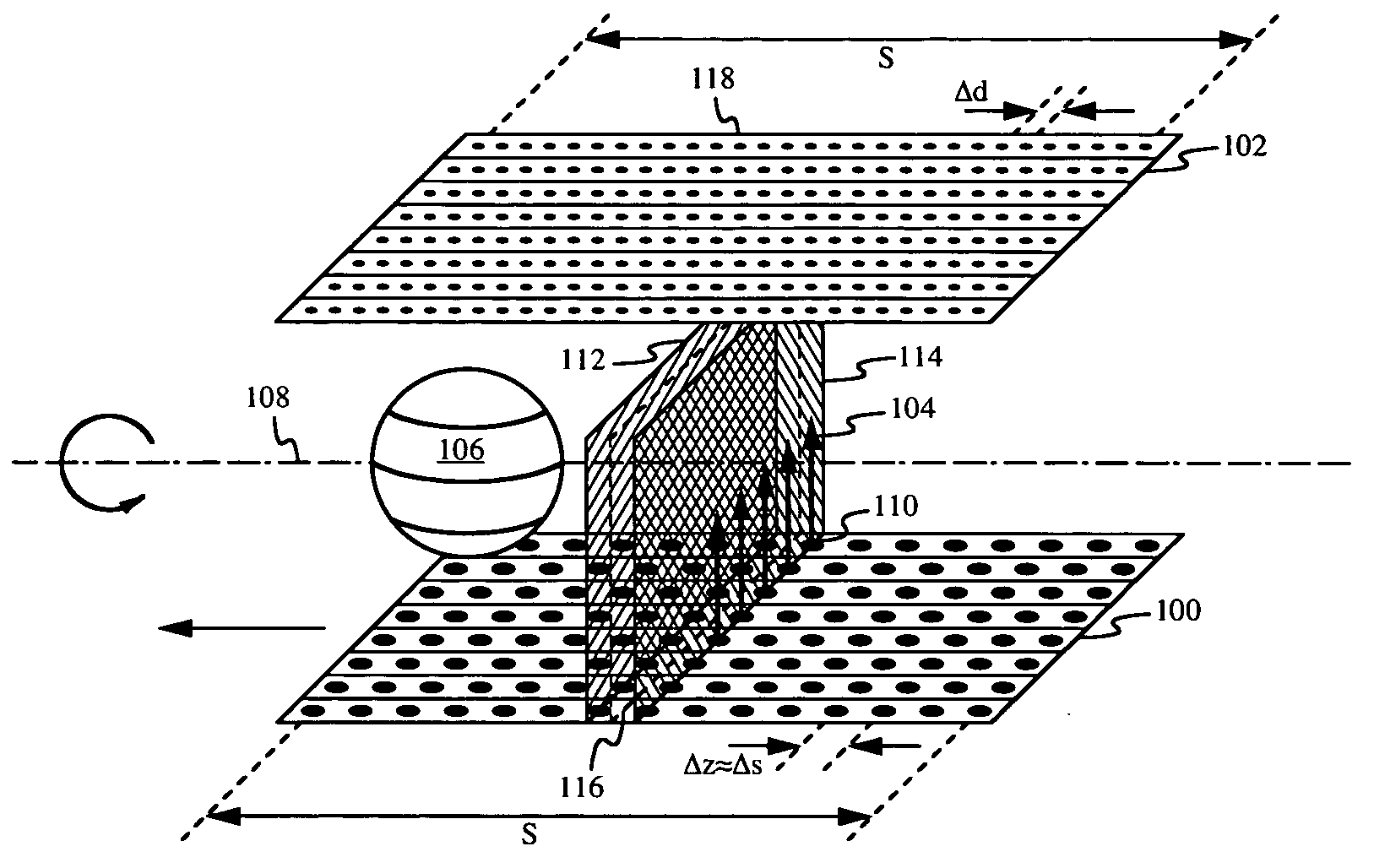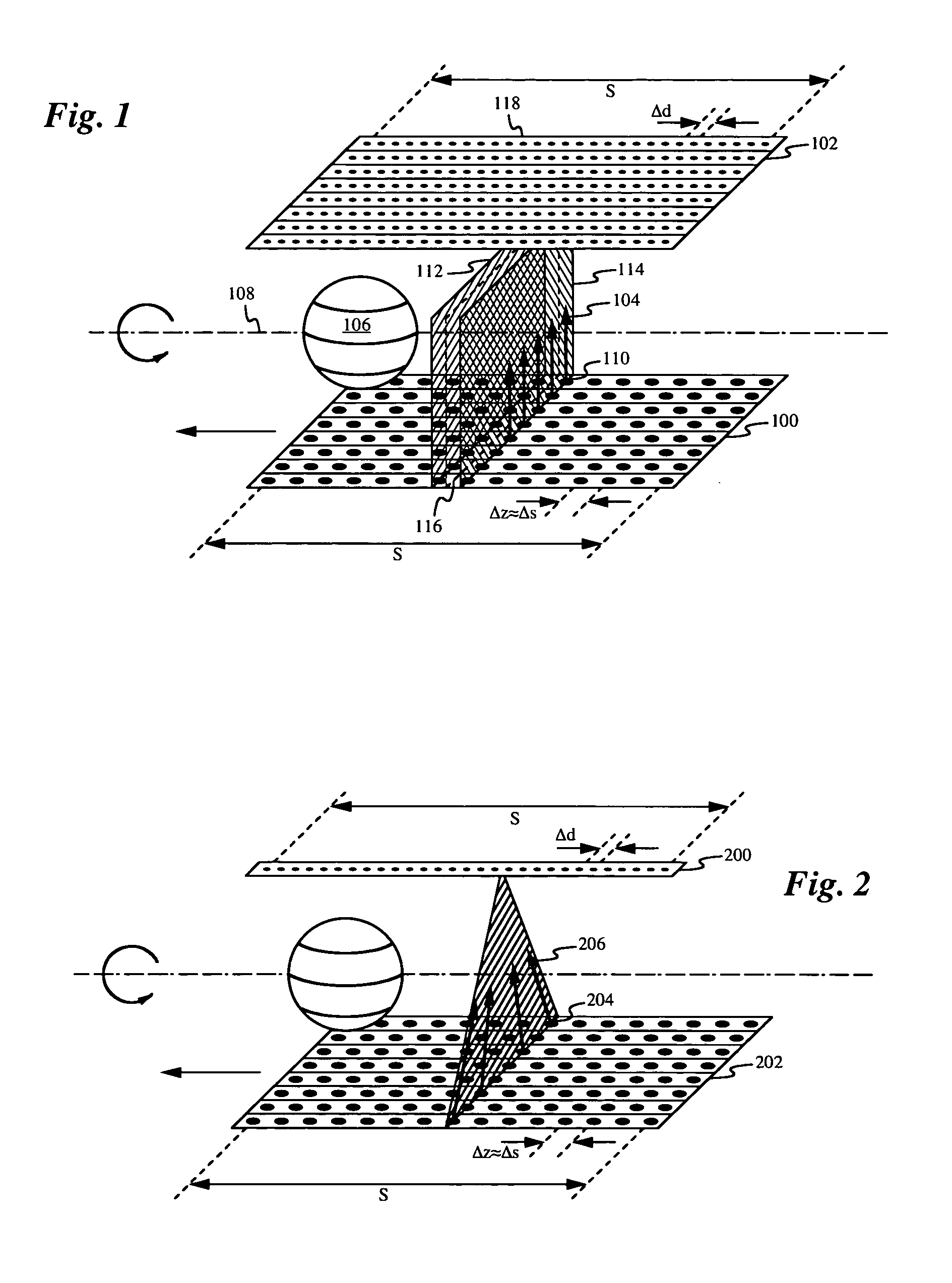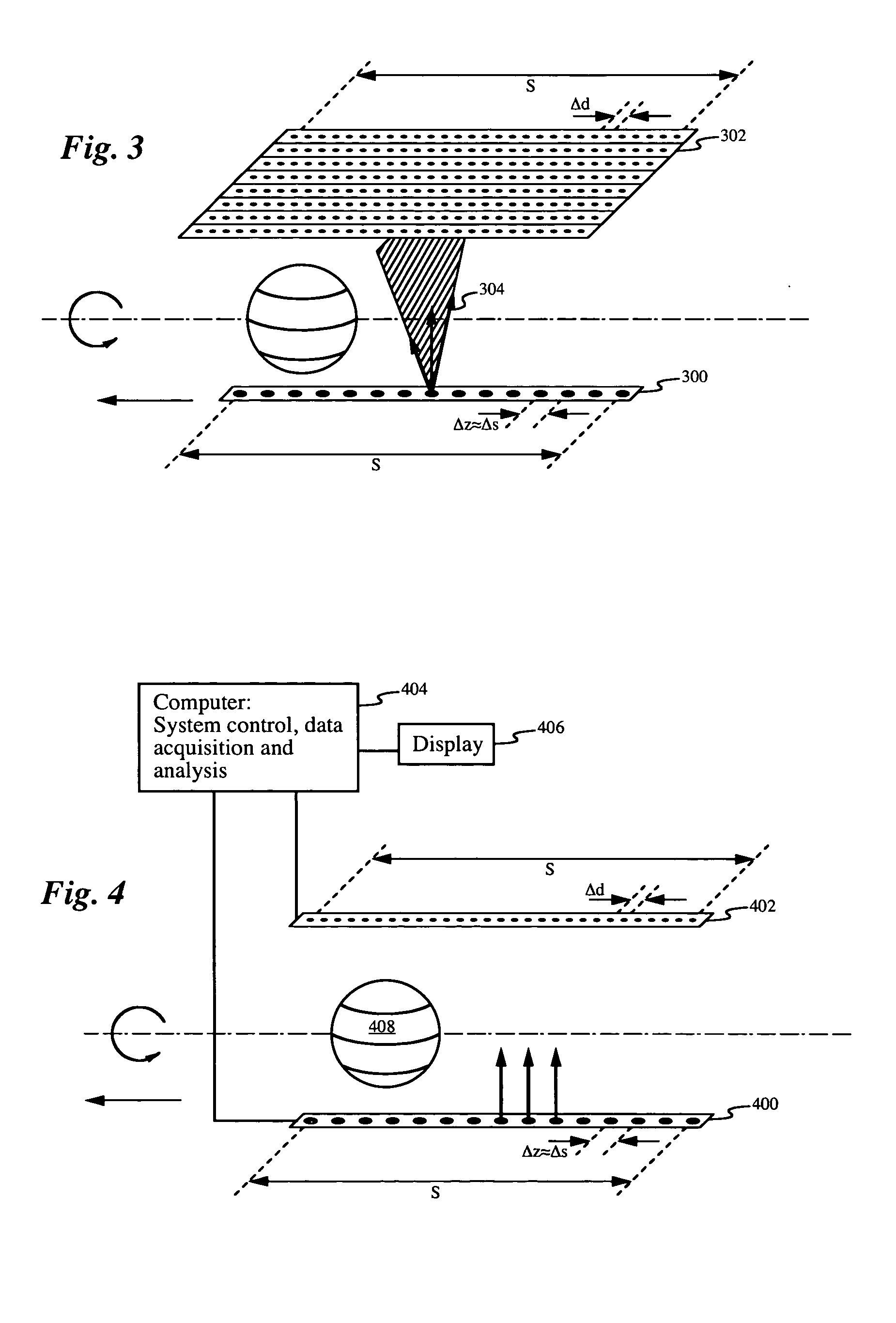Sampling in volumetric computed tomography
a computed tomography and volumetric technology, applied in tomography, applications, instruments, etc., can solve problems such as gaps in sampling, “cone beam” artifacts in systems, etc., and achieve the effect of reducing the z-dependence of the system and the associated sampling problem
- Summary
- Abstract
- Description
- Claims
- Application Information
AI Technical Summary
Benefits of technology
Problems solved by technology
Method used
Image
Examples
Embodiment Construction
[0010] A preferred embodiment of the scanning method is implemented with a volumetric computed tomography system using a scanned anode x-ray source array 100 and an array of detectors 102, as shown in FIG. 1. During operation, x-rays 104 from the source 100 pass through an object 106 (such as the body of a patient) and are sensed by the detector 102 to produce an image. The source 100 and detector 102 are fixed to a gantry (not shown) that can rotate the source and detector together about a rotational axis 108 (also called the z-axis or axial direction). After a rotation by a small angle, another image is then acquired. The process is then repeated for a collection of N distinct rotational angles spanning a total rotational interval of Δθ and the images acquired at all the various angles are computationally combined to create a three-dimensional representation of the object. The total rotation Δθ is preferably 180 degrees or more. Although the x-rays shown in
[0011]FIG. 1 appear to ...
PUM
| Property | Measurement | Unit |
|---|---|---|
| translation distance Δz | aaaaa | aaaaa |
| total rotation Δθ | aaaaa | aaaaa |
| distance | aaaaa | aaaaa |
Abstract
Description
Claims
Application Information
 Login to View More
Login to View More - R&D
- Intellectual Property
- Life Sciences
- Materials
- Tech Scout
- Unparalleled Data Quality
- Higher Quality Content
- 60% Fewer Hallucinations
Browse by: Latest US Patents, China's latest patents, Technical Efficacy Thesaurus, Application Domain, Technology Topic, Popular Technical Reports.
© 2025 PatSnap. All rights reserved.Legal|Privacy policy|Modern Slavery Act Transparency Statement|Sitemap|About US| Contact US: help@patsnap.com



